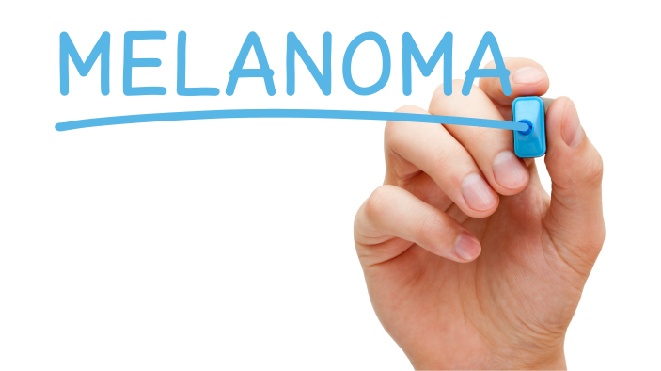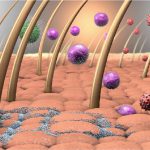Skin cancer can develop in any part of the body, but most often it is developed on skin that is more exposed to the UV radiation. Skin cancer occurs to people of all skin tones. Read more about skin cancer here.
What is melanoma?
Depending on the tissue or organ where the cancer begins, there are around 200 types of cancers and these are called primary cancers. Skin cancers are cancers that start in the skin cells and melanoma is a type of skin cancer that starts in a certain type of skin cells. Read more about skin cancer here.
Types of skin cancer cells:
There are three main types of skin cancer cells in the epidermis:
- Squamous cells
- Basal cells
- Melanocytes
The cancers that begin in the melanocytes are called melanomas.
Melanocytes:
Melanocytes are skin cells that make a deep brown pigment called melanin which is responsible to give the skin its colour. It protects the deep layers of the skin from the effects of the sun and exposure to sun increases the production of melanin making people get tan or get darker.
What are the risk factors of melanoma?
When the exact causes are of cancer are not known, certain conditions are identified to increase the chances of developing the cancer and these are called the risk factors. The presence of risk factors does not guarantee that a person gets cancer, nor does absence of risk factors prevent cancer, it only reflects higher probability of developing it. The following are the known risk factors of melanoma cancer:
- UV light: Exposure to ultraviolet radiation, primary source being sunlight can damage the DNA of the skin cells
- Moles: A mole is a benign pigmented tumour (non cancerous) but having too many irregular or large moles has an increased the risk of melanoma
- Color: People with fair skin tones, light colored hair and freckles are more likely to develop melanoma
Family history: The risk of melanoma is higher one or more first degree relative (parent, sibling or child) has melanoma - Personal history: A person who had melanoma or other skin cancers is more likely to develop melanoma again
- Weakened immune systems: People whose immune systems have been from diseases like HIV, due to medication such as radiotherapy or or medical procedures such as organ transplant are more likely to develop melanoma
- Melanoma is the most common cancer in people below the age of 30, though it is more likely to occur in older people
- Gender: The risk of melanoma based on the gender depends on the age too, men are more likely to develop this cancer type than women beyond the age of 50 while women are more likely to develop it before the age of 50
- Xeroderma pigmentosum: XP is a rare inherited condition that affects the skin’s ability to repair the damage to the DNA and people with this condition are at higher risk of developing melanoma and other skin cancers
What are the symptoms of melanoma:
The most important sign of melanoma is new spots on the skin or changes in the existing ones. The ABCDE rule covers the signs to lookout for in case of moles:
- A (Asymmetry): One half of the mole or the birthmark is different from the other
- B (Border): The edges of the mole are irregular, ragged, notched or blurred
- C (Colour): The colour is not uniform throughout the mole
- D (Diameter): The spot is larger than 6 mm (though it is possible for it to be smaller too sometimes)
- E (Evolving or elevating): The mole is changing in size, shape or colour
The other warning signs include:
- Soreness that does not heal
- Spreading of pigment from the edge of the mole into surrounding skin
- Redness or a new swelling beyond the border of the mole
- Changes in sensation, such as itchiness, tenderness, or pain
- Scaliness, oozing, bleeding or the appearance of a lump in the mole
Types of melanomas:
There are four main types of melanomas listed below in the decreasing order of occurrence, the first one being most common and the last one, the rarest.
- Superficial spreading melanoma
- Nodular melanoma
- Lentigo maligna melanoma
- Acral lentiginous melanoma
Staging of melanomas:
Most cancers that have tumours are staged using a staging system called TNM system and the same is used for melanoma. The size of the primary tumour (T), the presence of cancerous lymph nodes (N) and how far the skin cancer has spread to a different part of the body (M) can be described using the TNM system. Melanoma has four stages, lower the number of the stage, the less is the cancer has spread, with early stages being 1 and the most advanced stage being 4. The stages and the stage wise treatment of melanoma is discussed in detail in the further articles.
Treatment methods:
The following are the major treatment options for melanomas:
- Surgery
- Immunotherapy
- Targeted therapy
- Chemotherapy
- Radiation therapy




